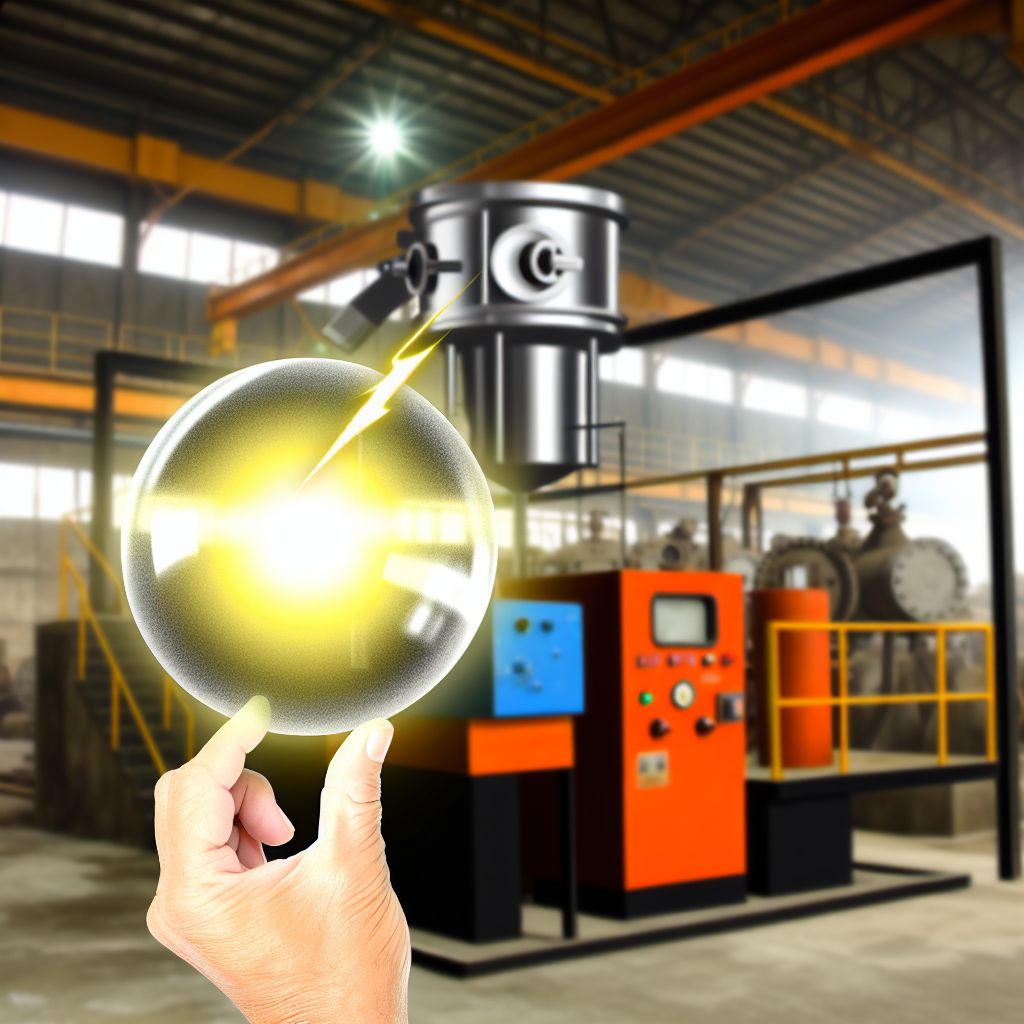Deutsch: Photoelektron / Español: Fotoelectrón / Português: Fotoelétron / Français: Photoélectron / Italiano: Fotoelettrone
A photoelectron in the industrial context refers to an electron that is emitted from a material (usually a metal or semiconductor) as a result of the photoelectric effect. This phenomenon occurs when photons (light particles) strike a material and transfer enough energy to an electron to overcome the material's work function, causing the electron to be ejected. This concept is pivotal in various applications ranging from scientific instruments to energy production.
Application Areas

- Photovoltaic Cells: In solar panels, photoelectrons generated by sunlight are harnessed to create electricity.
- Photoelectron Spectroscopy: Used in material science and chemistry for surface analysis and chemical composition studies.
- Night Vision Technology: Photoelectrons are used to amplify light in night vision devices.
- Medical Imaging: In certain imaging technologies, photoelectrons contribute to the generation of high-resolution images.
- Security Scanning: Utilized in equipment that scans for explosives and contraband.
Examples
- Solar Energy Companies: Harnessing photoelectrons for renewable energy production.
- Research Laboratories: Using photoelectron spectroscopy for material analysis.
- Aerospace Industry: Application in spacecraft solar cells and sensors.
- Security Agencies: Employing photoelectron-based devices for security scanning.
Risks
- Material Degradation: Repeated ejection of photoelectrons can degrade the emitting material over time.
- Radiation Exposure: In some applications, there is a risk of exposure to harmful radiation.
- Technical Complexity: The design and maintenance of systems utilizing photoelectrons can be complex.
- Environmental Impact: Certain photoelectron applications may use hazardous materials.
Recommendations and Usage
Optimization of materials and processes is crucial for efficiency, especially in solar energy. Regular maintenance and adherence to safety standards are important in applications involving radiation. Environmental considerations should be factored in during the design and disposal of photoelectron-based devices.
History and Legal Basics
The discovery of the photoelectric effect dates back to the early 20th century, with Albert Einstein famously explaining the phenomenon in 1905. Legal aspects mainly involve compliance with environmental regulations and intellectual property laws in technology development.
Examples of Sentences
- The efficiency of solar panels depends on the rate of photoelectron generation.
- Advances in photoelectron spectroscopy have revolutionized surface analysis.
- Photoelectron emissions are a key component in modern night vision technology.
- The study of photoelectrons is crucial in developing new semiconductor materials.
Similar Terms
- Photon
- Electron Emission
- Photoelectric Effect
- Solar Energy
- Spectroscopy
Articles with 'Photoelectron' in the title
- X-ray photoelectron spectroscopy: X-ray photoelectron spectroscopy (XPS) is a surface sensitive analytic tool used to study the surface composition and electronic state of a sample. XPS is also often referred to as ESCA, short for Electron Spectroscopy for Chemical Analys . . .
Summary
In industry, a photoelectron is integral to technologies that harness or analyze light energy, from solar panels to sophisticated imaging systems. The manipulation and understanding of photoelectrons have led to significant advancements in energy, security, and scientific research, making it a cornerstone in modern technological development.
--
Related Articles to the term 'Photoelectron' | |||||
| 'X-ray photoelectron spectroscopy' | ■■■■■■■■■■ | ||||
| X-ray photoelectron spectroscopy (XPS) is a surface sensitive analytic tool used to study the surface . . . Read More | |||||
| 'Polycrystalline material' | ■■■■■■■■■■ | ||||
| Polycrystalline material in the industrial and industry context refers to a substance made up of many . . . Read More | |||||
| 'Film' | ■■■■■■■■■■ | ||||
| Film: A film, also called a movie or Motion Picture, is a series of still images which, when shown on . . . Read More | |||||
| 'Amorphous' | ■■■■■■■■■■ | ||||
| In condensed matter physics and materials science, an amorphous (from the Greek a, "without", and morphé, . . . Read More | |||||
| 'Microscope' | ■■■■■■■■■■ | ||||
| Microscope: A microscope is an optical instrument used for magnifying small objects that are not visible . . . Read More | |||||
| 'Family' | ■■■■■■■■■ | ||||
| Family: In human context, a family (from Latin: familia) is a group of people affiliated by consanguinity . . . Read More | |||||
| 'Panel' | ■■■■■■■■■ | ||||
| Panel: In an industrial or industry context, a panel refers to a flat and usually rectangular component, . . . Read More | |||||
| 'Semiconductor' | ■■■■■■■■■ | ||||
| A semiconductor is a material which has electrical conductivity to a degree between that of a metal (such . . . Read More | |||||
| 'Slab' | ■■■■■■■■■ | ||||
| Slab: In the industrial/industry context, a "slab" usually refers to a large, flat piece of material . . . Read More | |||||
| 'Amorphous silicon' | ■■■■■■■■■ | ||||
| Amorphous silicon in the industrial context refers to a non-crystalline form of silicon, which is used . . . Read More | |||||
